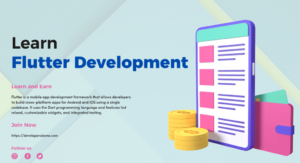Flutter is a popular mobile app development framework that allows developers to create beautiful, responsive, and fast mobile applications for Android and iOS platforms. One of the key features of Flutter is its ability to easily implement tabs within a mobile app, making it easy for users to navigate through different sections of the app. In this blog post, we will cover everything you need to know about implementing tabs in your Flutter application, including tips and tricks, frequently asked questions, and more.
Contents
What are Flutter tabs?
Fluttertabs are a navigation feature in the Flutter framework that allows users to switch between different screens or sections within a mobile app. Tabs are typically placed at the top of the screen, and users can easily switch between different tabs by tapping on them.
How do I implement tabs in Flutter?
Implementing tabs in Flutter is relatively simple. First, you need to add the tabs package to your pubspec.yaml file. Then, you can create a TabController to manage the state of the tabs and create a TabBar to display the tabs at the top of the screen. Finally, you can create TabViews to display the content for each tab.
Can I customize the look and feel of the tabs in Flutter?
Yes, Flutter provides several options for customizing the look and feel of tabs, including the ability to change the color, shape, and size of the tabs. You can also add icons or images to the tabs to make them more visually appealing.
How do I handle events when a user switches between tabs?
You can use a TabController to listen for changes in the selected tab and trigger events accordingly. For example, you can update the content displayed on the screen when a user switches to a different tab.
Are there any best practices for implementing tabs in Flutter?
Yes, there are several best practices to keep in mind when implementing tabs in your Flutter application. For example, it’s a good idea to limit the number of tabs to avoid overwhelming users and to provide clear labels for each tab to make it easy for users to understand what each tab represents.
Can I use Fluttertabs in both Android and iOS apps?
Yes, Fluttertabs work seamlessly in both Android and iOS apps, making it easy to create cross-platform mobile applications that look and feel native to both platforms.
Conclusion
Implementing tabs in your Flutter application is a great way to provide users with a seamless and intuitive navigation experience. By following the best practices and tips outlined in this blog post, you can easily create tabs that are visually appealing, easy to use, and work seamlessly across both Android and iOS platforms. With Flutter’s powerful features and flexibility, the possibilities for creating great mobile apps with tabs are endless.


